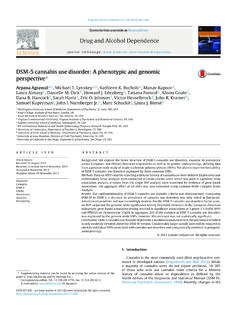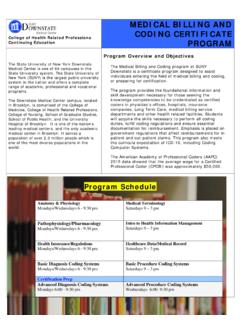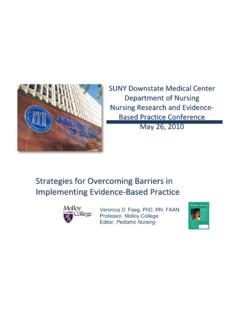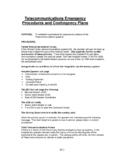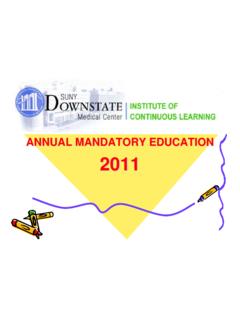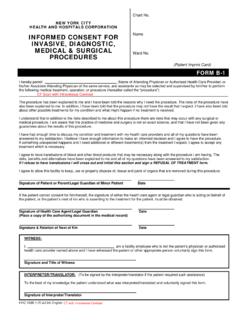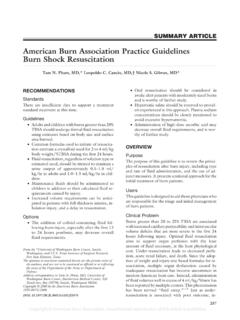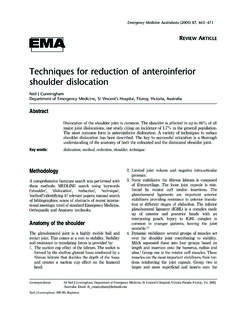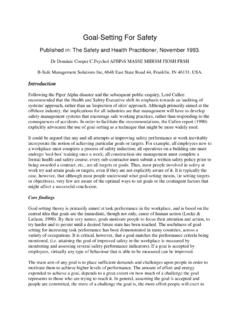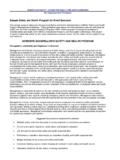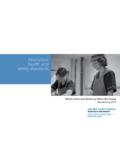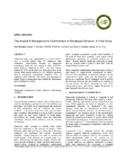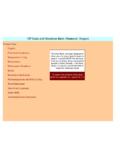Transcription of Poster for National Patient Safety GOALS 2017
1 National Patient Safety GOALS Goal 1 Improve the Accuracy of Patient Identification Goal 2 Improve the Effectiveness of Communication Among Caregivers Report critical results of tests and diagnostic procedures on a timely basis. Goal 7 Reduce the Risk of Health Care-associated Infections. Goal 15 Identify Individuals at Risk for Suicide Goal 15 The Organization Identifies Safety Risks Inherent in its Patient Population. (Suicidal Ideation) Critical results of tests and diagnostic procedures fall significantly outside the normal range and may indicate a life threatening situation. The objective is to provide the responsible licensed caregiver these results within an established time frame so that the Patient can be promptly treated.
2 Goal 3 Improve the Safety of Using Medications Reduce the likelihood of Patient harm associated with the use of Anticoagulation therapy. Take extra care with the Patient who takes the medicine to thin their blood. Maintain and communicate accurate Patient medication Information through the Medication Reconciliation process. Record and pass along correct information about a Patient s medicines. Find out what medicines the Patient is taking. Compare those medications to new medication given to the Patient . Make sure the Patient knows which medicines to take when they are at home. Tell the Patient it is important to bring their up-to-date list of medications every time they visit a doctor or a health care provider. Goal 6 Reduce the Harm Associated with Clinical Alarm Systems The organization identifies patients at risk for suicide.
3 Applicable to psychiatric hospitals and patients being treated for emotional or behavioral disorders in general hospital Find out which patients are most likely to try to commit suicide through a screening process during admission and thereafter. The Universal Protocol (UP1) explains how to prevent a procedure on a wrong Patient , wrong side and wrong site. It ensures that the correct surgery is done on the correct Patient and at the correct site on the Patient s body. Conduct a pre-procedure verification process as stated in the Universal Protocol (UP1). Mark the correct site on the Patient s body where the surgery is to be performed. Pause and Conduct a time-out immediately before starting the procedure as described in the UP1. Department of Patient Safety Phone: (718) 270-4237 Fax: (718) 613-8755 Edited: 2017 2017 Universal Protocol (UP 1) Report critical results of tests and diagnostic procedures to the appropriate staff on time.
4 Label all medications, medication containers ( , syringes, medicine cups, basins), or other solutions on and off the sterile field in perioperative and other procedural settings. The organization selects a suitabl Use at least two Patient identifiers: Patient s full name and date of birth (not to be the Patient s room number) when administering medications or blood products; taking blood samples and other specimens for clinical testing, or providing any other treatments or procedures. Eliminate transfusion errors related to Patient misidentification We comply with current Centers for Disease Control and Prevention (CDC) hand hygiene guidelines Implement evidence-based practices to prevent health care-associated infections due to 1. Multi Drug Resistant Organisms, 2. Central Line Associated Bloodstream Infections 3.
5 Surgical Site Infections. 4. Catheter Associated Urinary Tract Infections. 1. Improve the Safety of Clinical alarm System 2. Input from the medical staff & clinical areas 3. Risk to patients if the alarm signal is unattended 4. Identify whether specific alarm is needed 5. Analyze incident history for potential harm 6. Establish clinically appropriate alarm setting 7. Staff education and proper orientation on the Safety of alarm systems
